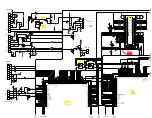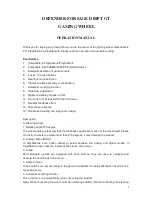
⑦
Product Name
Model
Detection System
Distance
Angle
Adjustment range
Sensitivity
Detection
timer
Supply Voltage
Current Consumption
Detection output
Operation LED
Ambient temperature
Installation
Weight
Appearance
BATTERY OPERATED FLAME SENSOR
TX-124R
Ultraviolet rays detection (Detected wave length: 185 to 260nm)
33ft. (10m): (Gas Flame of Lighter in front of sensor: approx. : 2.75" (7cm))
100ft. (30 m): (Flame of N-heptane on fire plate 15cm × 15cm: approx. : 23.62" (60cm)) *The flame size is rough.
Vertical: approx. 75° (upward: 15°, downward: approx. 60°) Horizontal: approx. 100°
Vertical: downward 90° (horizontal-vertical) Horizontal: 180°
H (100%), L (50%) [selectable by switch]
1 sec, 6 sec, 15 sec, 30 sec [selectable by switch]
(Red/Black wires)
DC3V (CR123A)
Standby: 55μA Max, Detection: 1mA Max
(Blue/White wires)
Solid State Switch N.C 3VDC
s
0.01A Max
Output when detecting Ultraviolet, Real time + delay time 2 sec
Detection: Red LED
Real time + delay time 2 sec
-4°F to +122°F (-20°C to 50°C)
Indoor, Outdoor
approx. 17.9 oz (510g)
Resin (White)
Detection
Area
Sensitivity
Adjustment
63(&,),&$7,216
Solve possible problems according to the following table:
If normal operations cannot be restored by these corrective actions, contact either the dealer from whom you bought the unit or TAKEX.
7528%/(6+227,1*
Maintenance
Trouble
Completely inactive
Sometimes inactive
Activated without
flame
Check
●
No battery connected
●
Low battery
●
No power supply (Broken wire or improper wire)
●
An object that is obstructing the rays is in front of
detection area
(Glass and transparent resin block ultraviolet rays)
●
The interior of the sensor is wet due to condensation,
etc.
●
Improper area setting
●
Detection window has dust on it
●
Low battery
●
Large electrical noise source such as a radio station
or high-voltage wire nearby
●
Unexpected ultraviolet rays nearby
(Ref : 3, PRECAUTIONS)
●
The interior of the sensor is wet due to condensation,
etc.
●
Connect battery
●
Change battery
●
Correct power supply or replace broken wire
●
Remove the object obstructing the rays
●
Dry out the sensor's interior, and remove the cause
of the water ingress
●
Readjust the sensor to an appropriate position
●
Remove the dust
●
Change battery
●
Relocate the sensor
●
Remove the source of the ultraviolet rays, the
ultraviolet rays that are interrupting, or relocate the
sensor
●
Dry out sensor inside, and remove the cause of the
wet
Corrective action
When the sensor is dirty clean the cover with a soft cloth
moistened with a small amount of cleaning solution.
Do not use chemicals such as thinners or alcohol.
Check operation once a week.
Do not fail to check operation whenever furniture in the
vicinity is moved.
When the battery is low, change it for a new one
immediately.
If the battery is not changed, the sensor may not operate.


























